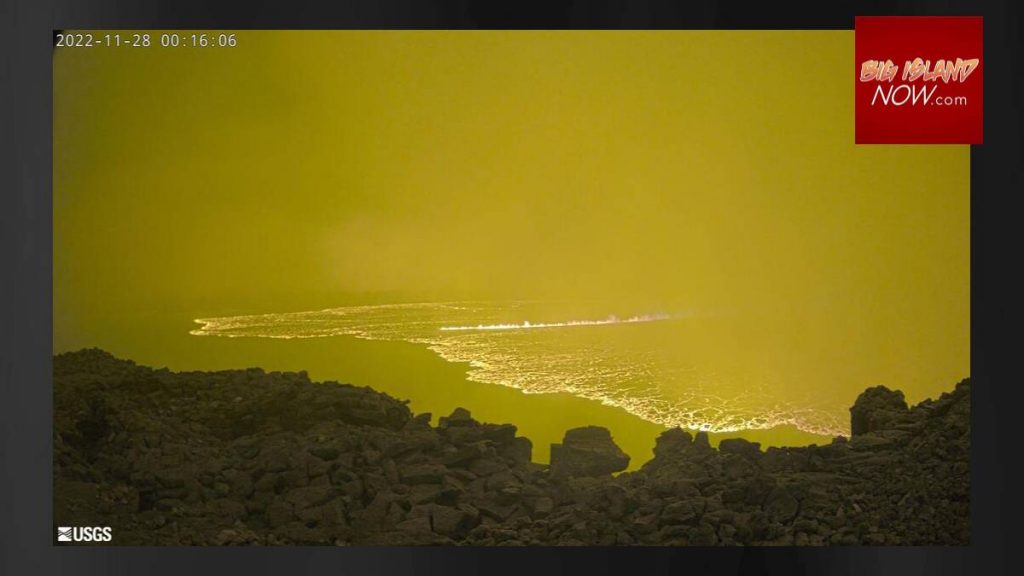Big Island’s Mauna Loa began erupting Sunday evening for first time in 38 years
Mauna Loa, the 13,681-foot volcano on the Big Island, is erupting for the first time in 38 years.
The eruption began about 11:30 p.m. Sunday in Moku‘āweoweo, the summit caldera of Mauna Loa, inside Hawai‘i Volcanoes National Park.
A half-hour earlier, the National Weather Service reported a 4.4 magnitude earthquake occurred in the summit area of Mauna Loa.
At this time, lava flows are contained within the summit area and are not threatening downslope communities, according to scientists with the Hawaiian Volcano Observatory.
“Winds may carry volcanic gas and possibly fine ash and Pele’s hair downwind,” said a news release form the observatory.

The National Weather Service issued an ashfall advisory until 6 a.m. Monday morning. Up to one-quarter inch of ashfall accumulation is forecast for a portion of the Big Island.
It could cause possible harm to crops and animals and reduce visibility. People with respiratory illnesses should remain indoors to avoid inhaling the ash particles and anyone outside should cover their mouth and nose with a mask or cloth.
The Hawai‘i Emergency Management Agency has activated its Emergency Operations Center for enhanced monitoring of the evolving situation and to provide any support requested. At this time, no evacuation has been ordered.
Residents living on Mauna Loa slopes should review their preparedness. For preparedness information from Hawai‘i County, see these resources: https://hawaii-county-volcano-hazards-hawaiicountygis.hub.arcgis.com/.

Mauna Loa was long overdue to erupt. The volcano had erupted 33 times since 1843, but the last time had been March 25, 1984.
Scientists had been closely monitoring the volcano, which has had increased seismic activity for the past few months. The Mauna Loa summit, cabins and high-elevation areas have been closed for weeks due to the increased seismic activity.
Community meetings have been held around the Big Island by the Hawai‘i County Civil Defense and the Hawaiian Volcano Observatory to answer questions and provide information due to the heightened unrest.
On Sunday, a 4.1 magnitude earthquake also occurred on the summit region of Mauna Loa volcano at 11:52 p.m., according to the National Weather Service in Honolulu.
Based on past events, the early stages of a Mauna Loa eruption can be very dynamic and the location and advance of lava flows can change rapidly.
If the eruption remains in Moku‘āweoweo (the summit caldera), lava flows will most likely be confined within the caldera walls. However, if the eruptive vents migrate outside its walls, lava flows may move rapidly downslope.
When Mauna Loa erupted in 1950 in the Southwest Rift Zone, lava made it to the ocean within three hours.
The Hawaiian Volcano Observatory is in close consultation with emergency management partners and will be monitoring the volcano closely to provide further updates on activity. The observatory said it will conduct aerial reconnaissance as soon as possible to better describe the eruption and assess hazards.
For more information, click here.
Mauna Loa webcams are at https://www.usgs.gov/volcanoes/mauna-loa/webcams.



